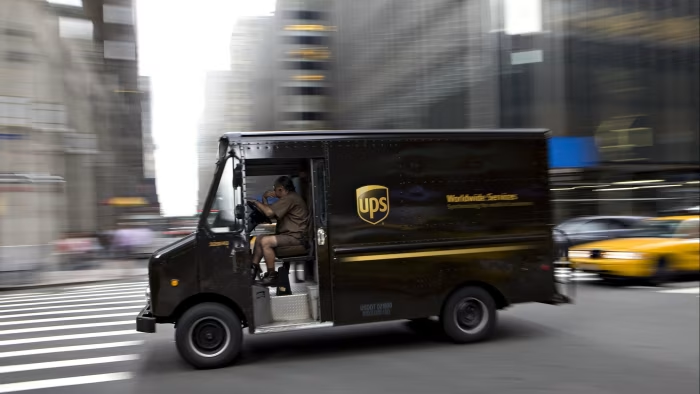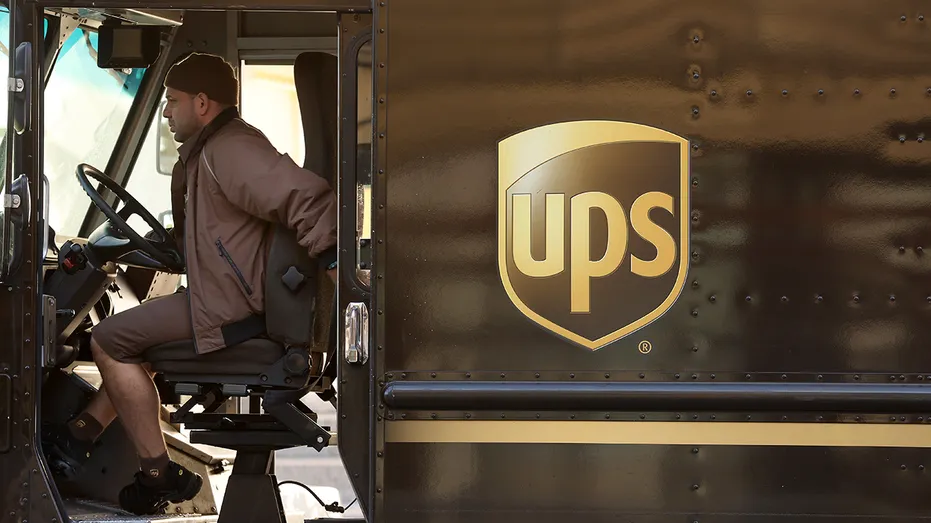The logistics world is buzzing after UPS, one of the largest parcel delivery services in the world, announced it is cutting Amazon shipments by 50%. This surprising move is sending ripples across the e-commerce and shipping industries. For years, Amazon and UPS have been close partners, with UPS handling a significant portion of Amazon’s last-mile deliveries. However, times are changing — and so are partnerships.
This shift could mark the beginning of a major transformation in how e-commerce companies like Amazon handle logistics. It may also present new opportunities for smaller businesses, rival carriers, and even customers.
In this article, we’ll break down what this change means, why UPS made this decision, how Amazon might respond, and what the broader implications are for global logistics.
Why Is UPS Cutting Amazon Shipments by 50%?
UPS CEO Carol Tomé recently stated that the company has been strategically reducing its reliance on Amazon for some time. In fact, Amazon has become more of a competitor than a client.
Here’s why UPS made this move:
- Reducing Dependency: Amazon made up about 11% of UPS’s total revenue in recent years. While that’s a large chunk, UPS has been trying to reduce this number to lessen its dependency on one customer.
- Amazon’s Growing Logistics Network: Amazon is no longer just a retailer — it’s also a logistics powerhouse. It has built a vast delivery network of its own, now capable of delivering millions of packages per day. This move positions Amazon as a direct competitor to UPS.
- Profitability Over Volume: UPS is shifting its focus from high-volume, low-margin shipments to smaller, more profitable clients and services.
Carol Tomé summarized this strategy by saying, “We are laser-focused on driving revenue quality.” That means fewer packages, but more profit per package.
The Evolution of the UPS-Amazon Relationship
Once upon a time, Amazon relied heavily on UPS to deliver its packages. During peak shopping seasons like Black Friday or the holidays, UPS trucks were practically Amazon-branded in all but name.
But over time, Amazon began building its own fleet — planes, delivery vans, and warehouses — allowing it to deliver packages faster and cheaper without third-party carriers.
Now, Amazon delivers over 70% of its packages in-house in the U.S., according to recent reports. That leaves less room for UPS in the Amazon ecosystem.
UPS saw the writing on the wall. Rather than continuing a relationship that’s slowly shrinking, it decided to cut ties in half — literally.
Impact on the Logistics Industry

This decision is more than just a UPS-Amazon story. It could shift the entire logistics ecosystem.
Here’s how:
1. A Chance for FedEx and Regional Carriers
UPS cutting Amazon shipments opens the door for FedEx, DHL, and smaller regional couriers. Amazon may not be able to handle 100% of deliveries on its own yet, especially in rural areas. This could give rivals a chance to win back business.
2. More Control for Amazon
Amazon has been working toward total control over its delivery pipeline. By relying less on UPS, Amazon can improve delivery times, reduce costs, and fine-tune the customer experience. This also allows it to offer same-day or one-day delivery more efficiently.
3. Logistics Prices May Shift
UPS, by focusing on higher-margin customers, might increase prices or reduce service availability for high-volume, low-margin retailers. This could cause a ripple effect in shipping rates, especially for smaller e-commerce businesses.
4. Increased Competition
As Amazon grows its delivery arm, other logistics companies may face stiffer competition. Amazon’s logistics services are already being offered to external sellers, and in some cases, they undercut traditional carriers on price.
What Does This Mean for Customers?
For the average customer, this change might not be noticeable — at first. But over time, these shifts could affect:
- Delivery Speed: Amazon’s in-house network is efficient in urban areas but still developing in rural zones. Customers in remote locations may see changes in delivery times.
- Shipping Costs: If logistics companies like UPS start charging more to make up for lost volume, some online stores may pass those costs onto buyers.
- Delivery Options: With more players entering the scene and Amazon tightening control, customers may see fewer third-party delivery options at checkout.
Amazon’s Strategic Response
Amazon isn’t likely to lose sleep over this decision. In fact, it’s already several steps ahead:
- Amazon Logistics Expansion: Amazon now operates over 100 aircraft, tens of thousands of delivery vans, and hundreds of fulfillment centers worldwide.
- Third-Party Shipping Services: Amazon is not only delivering its own packages but is also offering delivery services to outside merchants — a direct challenge to UPS and FedEx.
- Investment in Technology: Amazon continues to invest in automation, drone delivery, and AI-powered route optimization, making its logistics smarter and faster.
It’s clear that Amazon is positioning itself as a full-stack e-commerce and logistics giant, challenging both retailers and shipping companies.
UPS’s New Focus: Profitable Customers

So where does UPS go from here?
Instead of chasing Amazon’s massive volume, UPS is now focusing on:
- Small and Medium Businesses (SMBs): These clients often need flexible, premium shipping solutions, which UPS can provide at better margins.
- Healthcare and High-Value Goods: UPS is investing more in medical logistics, like vaccine delivery and sensitive product transport.
- International Shipping Growth: As global e-commerce grows, UPS is expanding its global reach with more focus on cross-border shipping.
UPS’s message is clear: quality over quantity. And for a legacy company in a shifting market, that might be the smart move.
Potential Winners and Losers
Winners:
- Amazon: Gains more control over deliveries and brand experience.
- FedEx and Other Couriers: May absorb some of Amazon’s remaining outsourced shipments.
- Consumers: May benefit from faster, cheaper deliveries in competitive zones.
- Small eCommerce Companies: Might receive more attention from UPS.
Losers:
- UPS (Short Term): Could lose revenue before replacing it with more profitable customers.
- Rural Customers: Might face delivery slowdowns as Amazon’s network doesn’t fully cover remote areas.
- Legacy Logistics Networks: Face pressure to modernize or lose market share.
The Bigger Picture: Logistics Is Changing
What we’re witnessing isn’t just a company-level decision — it’s a shift in the very foundation of how packages move around the world.
The rise of vertically integrated companies like Amazon who do everything from selling to delivering is challenging the traditional logistics model. Carriers like UPS must adapt or risk becoming obsolete for some of the fastest-growing segments of the economy.
UPS cutting Amazon shipments by 50% might seem drastic, but it’s a calculated move that reflects the rapidly evolving balance of power in the global supply chain.
Final Thoughts: A Sign of What’s to Come
The logistics landscape is being reshaped in real time. The decision by UPS to cut Amazon shipments by 50% is not just about two companies — it’s a symbol of changing business models, growing competition, and the increasing importance of speed and efficiency.
This shift forces both logistics providers and retailers to rethink their strategies, invest in technology, and seek partnerships that align with long-term goals rather than short-term gains.
In the end, the winners will be those who adapt quickly, focus on value, and stay ahead of the curve in this high-speed, high-stakes delivery game.
Read Next – CPRA and BIPA Enforcement Intensifies Across the U.S.






